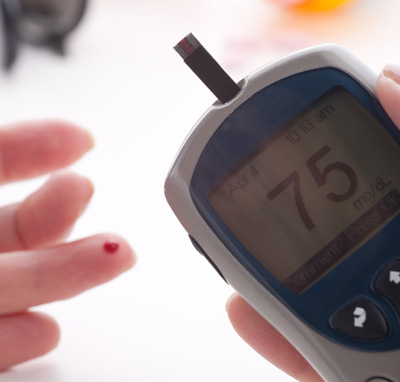Diabetes (Madhumeha in Hindi; meaning honeyed urination) is one of the modern lifestyle diseases so widespread that almost everyone knows someone suffering from it. It is a chronic condition in which the body starts excreting the excess sugar in the blood through urine. This may happen because of two reasons -
a) pancreas does not produce enough insulin to regulate the blood sugar levels
b) the body cannot effectively utilise the insulin produced due to insulin resistance
Our body releases the hormone insulin to regulate blood sugar levels. Scientists have identified specific genes that make people more likely to develop insulin resistance and diabetes. Excess weight, lack of physical activity, stressful lifestyle are other commonly known causes.
The condition of excess sugar levels in the blood termed as Hyperglycaemia, is a common effect of uncontrolled diabetes. This can lead to serious damage to vital organs like eyes, kidneys etc. and even routine functioning of body. Diabetics may exhibit following symptoms-
- excessive thirst and/ or hunger
- tingling sensations in feet and fingers
- frequent urge to urinate
- fatigue and irritability
- frequent infections
- blurred vision
- itchy skin
Types of Diabetes
The three types are -
- Type 1 (previously known as IDDM or insulin-dependent)
- Type 2 (formerly called NIDDM or non-insulin-dependent)
- Gestational (during pregnancy)
Risk factors involved
Some conditions make people more susceptible to developing type II diabetes -
- being overweight
- carrying a ‘fat-tyre’, especially around the middle
- possessing a family history of diabetes
- stressful and/ or irregular lifestyle
- increasing age
We often tend to notice this condition only when it’s late. Periodic check-ups are a must for those who clearly fall under the risk zone. Keeping eyes open for any tell-tale symptoms also helps. Routine check ups at least twice a year, especially for those above 45 years of age is actually a must.
Types of Blood Tests for determining diabetes/ prediabetes -
- Fasting blood glucose test (FBS): A fasting blood sugar level under 100 milligrams of glucose per decilitre of blood (mg/dl) is considered normal. If your blood sugar level is 100 to 125mg/dL, you have impaired fasting glucose (IFG) or prediabetes.
- Oral Glucose Tolerance Test (OGTT): After fasting for at least eight hours, FBS (fasting blood sugar) is checked and then an oral dose of 8 ounce sugary syrup is administered. The blood glucose level is checked after an hour and if it reaches 144-199 mg/dl after two hours, you have impaired glucose tolerance.

